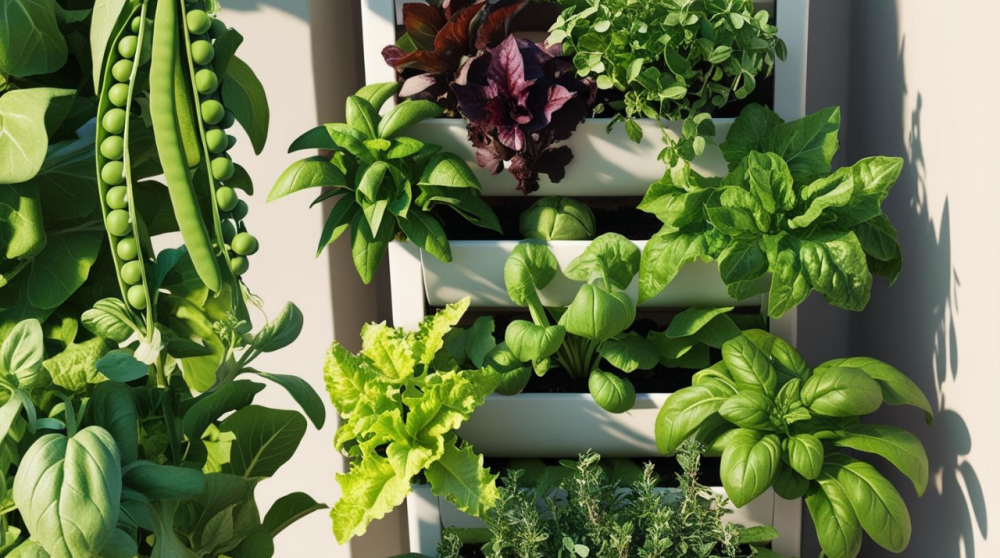Introduction: Cultivating High-Yield Gardens in Limited Space
You don’t need acres of farmland to grow a bountiful garden. In fact, studies show that urban gardens often produce more food per square foot than large rural farms. Surprised? You’re not alone here. You can indeed grow more food in less space!
Community gardens, balconies, patios, and even windowsills for example, these places can all become vibrant and productive food-growing spaces with a little planning and some creativity. By challenging the old and outdated ideas about how much land you need for gardening, you will be able to unlock the true potential and value of your garden space—no matter how small it might be.
So, at this time, let’s explore a few smart, innovative ways to grow more food in less space—starting with rethinking how we view land itself.
Rethink Land Use: Why Less Can Be More
It’s easy to assume that more land will accordingly mean more yield, but research tells a different story. Urban gardens—thanks to careful planning, intensive planting, and year-round attention—often outproduce traditional rural farms when measured by square footage. Vertical Gardening alone can produce anywhere from 50 to 100 times more yield per square foot than traditional farming due to its high-density and the ability to produce year-round.
Although the final overall yield will obviously be greater with large traditional gardens per the growing season, the efficiency of space and production by area used as well as the potential of a year-round crop makes a no contest for anyone looking to grow more food in less space
✅ Did you know?
As an illustration community gardens in cities like Philadelphia and New York have consistently outperformed the nearby commercial farms with yields of 2 to 4 times more produce per square foot.
These results challenge a major myth in gardening: That you need a large backyard to be able to feed your family. In reality, it’s how you use the space you have that matters most.
Take a look at this informative video “3 Clever Ways to Grow More in a Small Space”
Maximize Available Space: From Front Yards to Windowsills
Tip #1: Use All Available Space
Start first by identifying every possible area where sunlight touches—no matter how unconventional it is. These areas might include:
- Front yards (yes, edible front yards are in!)
- Balconies and porches
- Sunny kitchen windows
- Rooftop corners or ledges
- Stair rails or fence lines
Many urban growers have transformed both doorstep planters and railing pots into flourishing herb gardens. With the right mindset, even the smallest space becomes an opportunity.
💡 Pro tip: Use rolling containers or plant caddies to chase the sun around your space throughout the day.
Harness the Power of Shade: Edible Landscaping and Beyond
Full sun isn’t always necessary for food production. There are in fact many plants that thrive in partial or dappled shade, especially in hotter climates where too much sun can stress crops.
Grow Food in the Shade
Consider some of these nutrient-dense food crops that do well in limited light:
- Chaya (tree spinach)
- Moringa
- Ginger
- Turmeric
- Lettuce, chard, mint, and arugula
Edible Landscaping
Ornamental shrubs or non-edible perennials can be replaced by planting fruit or food-producing plants instead:
- Replace boxwood hedges with blueberry bushes
- Swap ornamental vines for grapes or climbing beans
- Use dwarf fruit trees in decorative planters
🌱 Not only will your space look lush, but you’ll also get food and beauty in one package.
Increase Efficiency with Dense Planting Techniques
Tip #2: Plant Densely and Intercrop Wisely
Most seed packets recommend spacing designed for large farms—not container gardens. Urban growers can and should bend the rules a tiny bit.
In brief, instead of planting in rows, consider interplanting with crops that support each other. For example:
- Tomatoes and carrots: Tomatoes provide partial shade, while carrots enjoy cooler soil.
- Tomatoes and Garlic or Basil: Garlic and Basil are effective pest deterrents.
- Cabbages and onions: Onions deter pests, and their shallow roots don’t compete much with cabbage.
Dense planting helps to:
- Reduce weeds
- Conserve moisture
- Protect soil health
🌱 Just make sure your soil is rich, well-draining, and that you’re feeding it regularly with compost or organic fertilizer.
Skyward Gardens: Going Vertical to Expand Space

Tip #3: Go Vertical Whenever Possible
Vertical gardening in particular is a game changer for tight spaces. With the right structures, you can double or even triple your growing area. It is the ultimate example of how to grow more food in less space.
Try these systems:
- Trellises and arbors for the vining plants like beans, cucumbers, and squash
- Wall-mounted planters or pallet gardens for leafy greens
- Hanging baskets for strawberries and herbs
Best Crops for Vertical Gardens
- Peas
- Pole beans
- Malabar spinach
- Tomatoes (in cages or with supports)
- Zucchini and cucumbers (trained upward)
💡 Follow the “Rule of Three”:
- Maximize sunlight exposure
- Use sturdy supports
- Keep watering accessible for the upper levels
Answers from Google: Top Questions About Growing More Food in Less Space
Here are a few commonly searched questions that might help you fine-tune your small-space garden:
❓ Can I grow food indoors?
Yes, absolutely! Herbs, salad greens, as well as dwarf tomatoes can thrive on sunny windowsills with proper lighting and care.
❓ What vegetables are best for containers?
Try radishes, lettuce, peppers, cherry tomatoes, and bush beans, given that these plants are compact and productive.
❓ How do I start vertical gardening?
Begin with simple structures like tomato cages or repurposed pallets. Then as you grow more confident, explore tiered planters and modular systems. Think outside the box a little and build your own garden masterpiece.
Conclusion: Grow Smart, Not Big
Your small space doesn’t have to mean you’re reaping a small harvest. With some strategic planning, creative thinking, and a little elbow grease, you can grow more food than you ever thought possible—right where you are.
From front yards to fire escapes, from shade crops to vertical gardens, every bit of your space can be productive. So go ahead—plant densely, think vertically, and garden boldly.





This is what I love about gardening, there is something for everyone, and you can have a garden no matter how limited your space, you may be living in a condo, apartment, or small back or front porch, a balcony, patio, etc.. Vertical Gardens can provide a garden tailored-made just for you. These types of gardens are unique and are making waves. I believe that gardening in small spaces is great gardening.